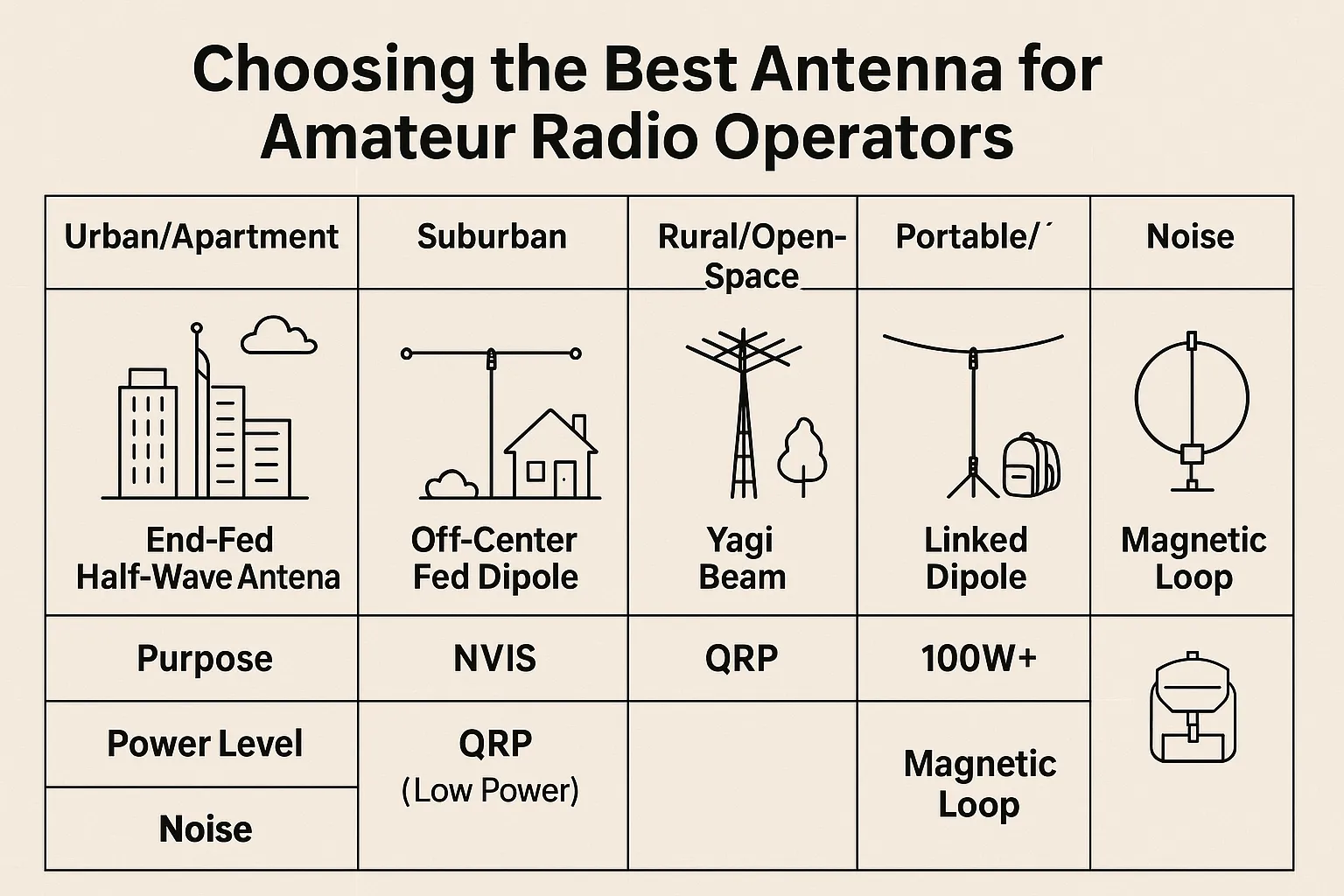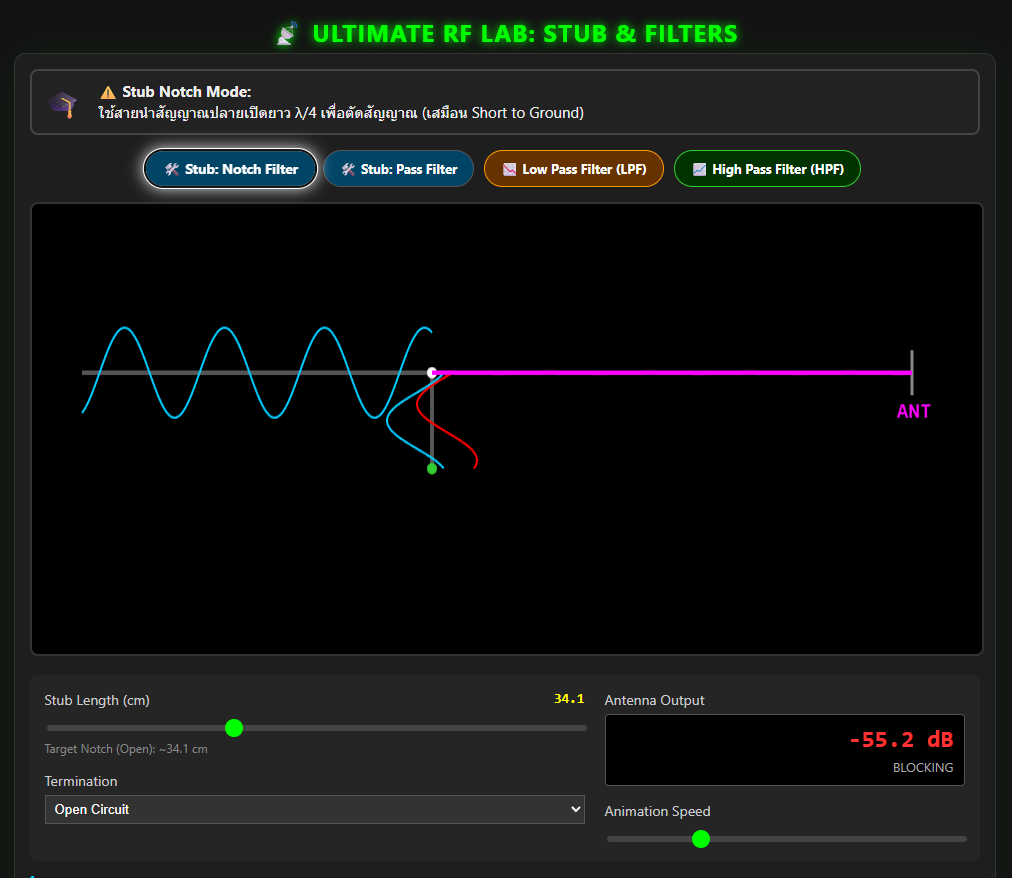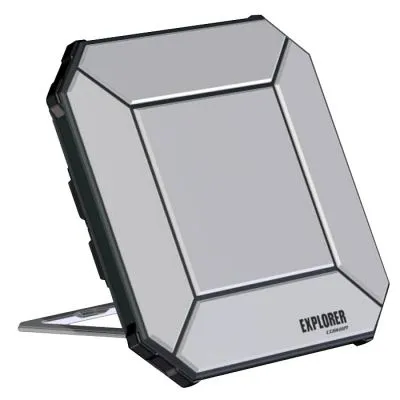amateur radio
antenna
dipole antenna
DXing
end fed half wave antenna
ham radio
magnetic loop antenna
portable operation
QRP
quad antenna
yagi antenna
AmateurRadio, antenna, dipole, dxing, efhw, FieldDay, hamlife, hamradio, hfantenna, magloop, ocfd, portableoperation, qrp, qth, radiocommunication, RadioTech, RadioWaves, sota, verticalantenna, vhfuhf
9M2PJU
0 Comments
Choosing the Best Antenna for Amateur Radio Operators: What Really Works Based on Location, Power and Purpose
An amateur radio station is only as good as its antenna. You could own the most powerful transceiver in the world, but without the right antenna, your signal might barely leave the neighborhood.
The challenge? There’s no “one-size-fits-all” antenna. Your location, power output, available space, operating frequencies, and communication goals all determine which antenna is right for you.
In this post, we’ll explore the best types of antennas for different ham scenarios — from high-rise apartments to rural acreages, QRP field days to full-power DXing. Let’s break it down.
🏠 1. Urban or Apartment Dwellers: Limited Space, High Noise
Typical Scenario:
You live in a condo or high-rise, surrounded by buildings and QRM from all directions. You can’t install large structures. Stealth and efficiency are key.
Recommended Antennas:
🧵 End-Fed Half-Wave (EFHW) Antenna
- Pros: Easy to deploy from a balcony or window, works across multiple bands.
- Use Case: Run a wire out a window to a tree or weight it down from a rooftop.
- Bonus Tip: Pair it with an ATU (Antenna Tuning Unit) for best performance.
🌀 Magnetic Loop Antenna
- Pros: Compact, very low noise, indoor-friendly, tunable to specific bands.
- Use Case: Ideal for operating HF from inside a small apartment or balcony.
- Real Life: Operators in dense cities like Kuala Lumpur have used loop antennas like the AlexLoop or Chameleon F-Loop with great results on 20m–10m.
🏡 2. Suburban Homes: Moderate Space, Mixed Noise Levels
Typical Scenario:
You’ve got a backyard, but not enough space for full-size HF arrays. Nearby houses and electronics cause moderate RFI.
Recommended Antennas:
🧵 Off-Center Fed Dipole (OCFD)
- Pros: Covers multiple bands (80–10m) with one antenna, easy to install as an inverted-V or flat-top.
- Use Case: Install it between your house and a tall tree. Works great at 6–12 meters height.
🌳 Vertical Antenna with Radials
- Pros: Omni-directional, low takeoff angle for DX, compact footprint.
- Use Case: A ground-mounted vertical like the DX Commander or Hustler 6BTV will help you work distant stations with lower angles of radiation.
- Real Life: Many Malaysian hams use verticals for 20m–10m SSB due to great propagation and efficient space use.
🌾 3. Rural or Open-Space Operators: Big Yard, Low Noise
Typical Scenario:
You have the luxury of space. Trees, land, and low noise allow for more ambitious setups. Time to go big!
Recommended Antennas:
🥇 Full-Size Resonant Dipole or Inverted V
- Pros: Easy to build, great performance, ideal for 40m/80m NVIS or DX depending on height.
- Use Case: Install between trees or masts at a height of 10m+ for best results.
📡 Yagi Beam Antenna
- Pros: Directional gain, ideal for DX, reduced QRM from unwanted directions.
- Use Case: A 3-element beam on a rotator will outperform almost any wire antenna for HF DXing.
- Real Life: A 9M2 station on a hilltop with a 20m Yagi and 100 watts can consistently reach Europe and North America.
🎒 4. Portable & QRP Operators: Lightweight and Versatile
Typical Scenario:
You’re operating on-the-go — for SOTA, parks on the air, or field day. Portability and ease of setup are vital.
Recommended Antennas:
🎒 Linked Dipole or PackTenna
- Pros: Easy to tune, lightweight, packs small.
- Use Case: Hang it as an inverted-V from a telescopic pole. Tune links for each band.
🚀 EFHW + Tuner
- Pros: Quick deployment, covers multiple bands.
- Use Case: Toss the far end into a tree, operate from a bench or picnic table.
- Real Life: With an Elecraft KX2 and EFHW, you can make QSOs across Asia on just 5 watts.
🌍 5. DX Hunters vs. Local Chatters: Communication Distance Matters
Your communication goal will also affect antenna selection:
| Goal | Best Antenna Type |
|---|---|
| NVIS (Short-range HF) | Horizontal Dipole <λ/4 above ground, especially for 80m–40m |
| DX (Long-range HF) | Vertical with radials, directional beams, elevated dipoles |
| VHF/UHF Line-of-Sight | Collinear verticals, Yagi for directionality |
| Satellite (LEO) | Dual-band Arrow Yagi, tracking rotators helpful |
⚡ 6. Power Levels: QRP vs. High Power Considerations
- QRP (5W or less): Focus on antenna efficiency, especially low-loss feedlines and resonant antennas. Loops and inefficient loading coils hurt QRP performance.
- 100W+: You’ll benefit more from directional gain and verticals with proper radial fields.
- Legal limit (1kW): Ensure antenna can handle the power — coax, baluns, and traps need to be rated accordingly.
📡 7. Urban RFI and Noise: Choose Wisely
Urban environments are noisy — from switching power supplies to broadband internet lines.
Best Antenna for Noise Rejection:
- Magnetic loops: Great noise rejection and directivity.
- Balanced antennas (like dipoles): Less likely to pick up common-mode noise than verticals.
- Chokes and ferrites: Essential for reducing noise picked up on feedlines.
🛠️ Pro Tips for All Setups
- Use a good coaxial feedline: RG-213 or LMR-400 for longer runs; avoid RG-58 for high-power or long HF lines.
- Height is might: The higher the antenna (especially for HF), the better the performance.
- Antenna tuner (ATU): Internal or external — it widens the usability of non-resonant antennas.
- Don’t ignore grounding and lightning protection.
🔚 Final Thoughts: Pick What Works for You, Not What’s Hyped
The perfect antenna is not the most expensive or complex — it’s the one that best suits your operating conditions, goals, and limitations.
- Urban apartment? → Loop or EFHW.
- Backyard ragchewer? → OCFD or vertical.
- Rural DXer? → Beam antenna.
- SOTA/QRP? → Linked dipole or wire vertical.
Experiment, test, and find what works best for your QTH.







Post Comment